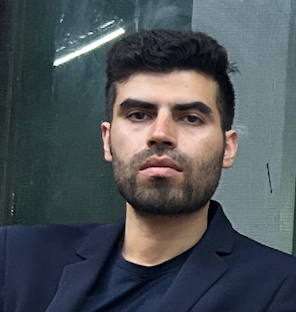In this article, I’ll give you some tips that’ll teach you how to read body language like a pro. I won’t be discussing specific body language gestures but general things that you should keep in mind while decoding body language.
Mastering non-verbal communication skills will turn you into a magician. You’ll be able to predict the future behaviour of people, you’ll be able to understand what’s on a person’s mind without talking to them and you’ll know what kind of a conversation a group is having by simply watching it from a distance.
But, of course, this kind of power has to be earned- you don’t get it by having a magic wand waved over your head or by chanting mantras. You have to work for it.
I recommend that you continue reading this post only after you’ve read at least some of the posts in the body language section so that you may get a good idea about the advantages of learning body language.
Okay, so what are the things you need to do in order to become the David Copperfield of body language?
1) Keep your eyes open
I know that your eyes are already open but do they see as much as they can? For most, the answer is no. We humans have selective attention. We filter out everything from the environment that we consider unimportant.
Once you learn body language, a whole new world will open up to you. You’ll feel like you were blind before. How could you ever miss so many obvious signs?
What actually happens when you seriously start to learn body language is that your mind starts to realize how important it is.
Before, it was just useless data that your conscious mind simply filtered out without bothering much about it. But now every movement, every gesture is important. It may give a clue as to what a person’s thinking.
Learning and practising body language will open up your awareness dramatically. A cascade of information will flow into your mind whenever you see or meet people.
This information will initially seem overwhelming but don’t worry your mind will gradually adapt to this new way of seeing the world. You’ll reach a point where observing body language as you go along with your normal life will become a habit, a second nature.
This overwhelming awareness, however, can piss some people off. They might want to back off and ‘forget about it’ because it is simply too much mental work. So they soon start to unlearn their non-verbal skills and go back to their previous, comfortable level of awareness.
Like I said, your mind will gradually adapt to this high-level awareness so you don’t need to freak out. The benefits of developing non-verbal skills far outweigh the initial discomfort that it may cause.

2) Observe yourself as much as you observe others
Learning body language is all about understanding how our emotional state is reflected in our body movements and gestures in different situations. The more you observe body language and interpret it correctly, the more the skill will solidify in your mind.
You always have to connect a gesture with what’s going on in a person’s mind. But there’s no way you can peek into a person’s mind to see what they’re thinking, in case you wanted to confirm your observations. All you can do is watch their actions and hear their words.
But that’s not the case when you’re observing yourself. By watching your own body language in different situations, you’ll master your non-verbal skills in no time because you’re already in your head and you know what you’re thinking. So you can confirm the meaning of different gestures easily and quickly without much ambiguity.
Again, awareness matters here or to be more precise- self-awareness. Only by watching your thoughts and then relating them to your gestures can you engrave non-verbal skills more deeply in your mind.
Your skill in reading others’ emotional states will be in direct proportion of how well you understand your own emotional states and their associated gestures.
3) Time reveals all
The whole purpose of reading body language is to be able to understand a person’s emotional state before they verbalize it or act upon it. Observing gestures in an isolated manner is a grave mistake.
You not only need to look at the context in which a gesture is done but you also need to take note of the preceding and succeeding gestures to fully understand a person’s emotional state.
Oftentimes, when the body language of a person is ambiguous, the gestures that the person did a few seconds earlier or the gestures that he does a few seconds later reveal what actually was on his mind.
So don’t look at things individually. Keep the whole picture in mind. If the preceding gestures don’t give you a clue then the succeeding gestures most likely will. Time will reveal all.
4) Learn from mistakes
Your non-verbal skills will be as good as the number of mistakes you make when you start practising, period. If you’re making mistakes it means you’re sharpening your axe, honing your skills.
When you start out reading body language, you’ll make a lot of mistakes. If you don’t, something is wrong. You’re either jumping to conclusions or you simply haven’t understood body language.
As you continue practising, you’ll notice that you’re making lesser and lesser mistakes. This is true for any skill, not just body language. If you stick with it, you’ll soon reach a skill level that will amaze you.
You’ll thank the heavens for not quitting early on when it all seemed to be going nowhere.
Keep practising. Every mistake has something to teach so be prepared to make a lot of them.
